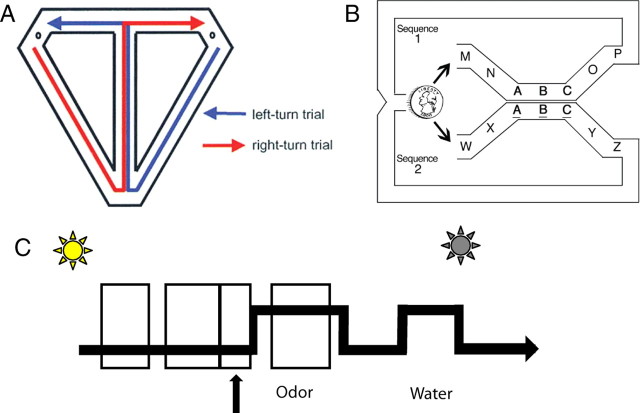Figure 1.
Two disambiguation of overlapping sequences tasks. A, The T-maze alternation task described by Wood et al. (2000, their Fig. 1A). In this task, rats ran a figure eight pattern traversing the central arm on both left and right turn trials. Hippocampal place cells with firing fields on the central arm fired differently depending on whether the rat was going to make a left or a right turn. B, The overlapping odor sequence task used in the current study is formally similar to that in A, using sequences of odors instead of sequences of places. Sequences were presented continuously and randomly (coin). Odors are represented by letters, and the two sequences shared the common odors ABC. All odors were rewarded except the odors ABC in sequence 2 (underlined). Thus, whether a shared odor was rewarded was determined by the sequence in which the odor occurred. C, Timeline of a single trial. On a given trial, the houselight turns on indicating that the rat may nosepoke in the odor port (arrow). After a variable delay, the odor is delivered. If the rat maintains the nosepoke for at least 1250 ms, a nosepoke in the water port would result in the delivery of water, extinction of the houselight, and initiation of a 3 s intertrial interval. Analysis epochs are indicated by boxes that include (left to right) the preodor period (1500–1000 ms before the odor poke), approach period (800–200 ms before the odor poke), odor-poke period (200 ms before to 200 ms after the odor poke), and odor-sampling period (200–1000 ms after the odor onset).

